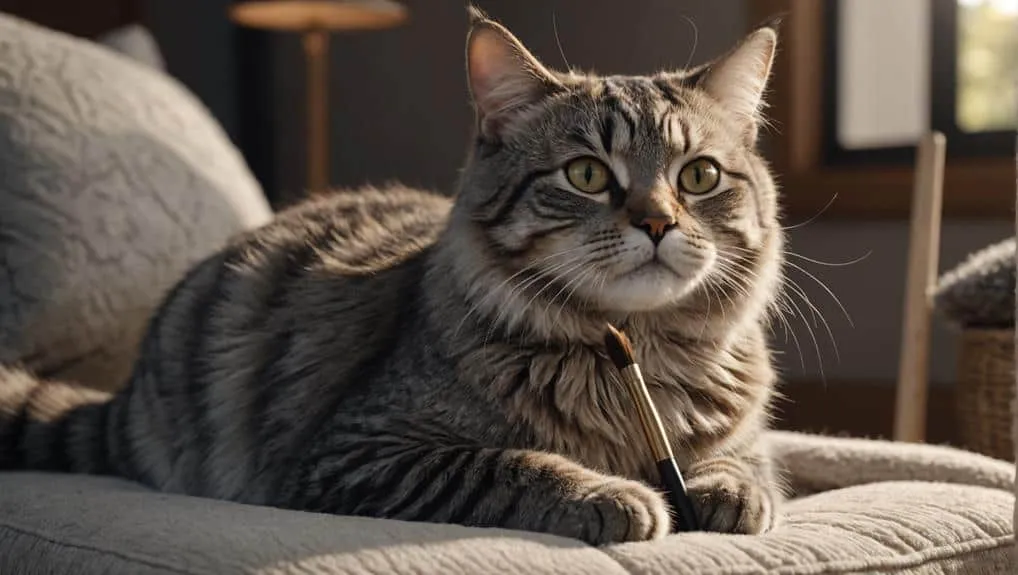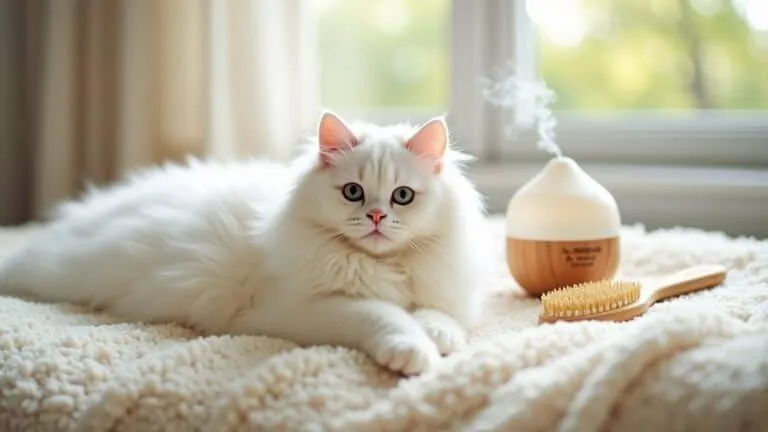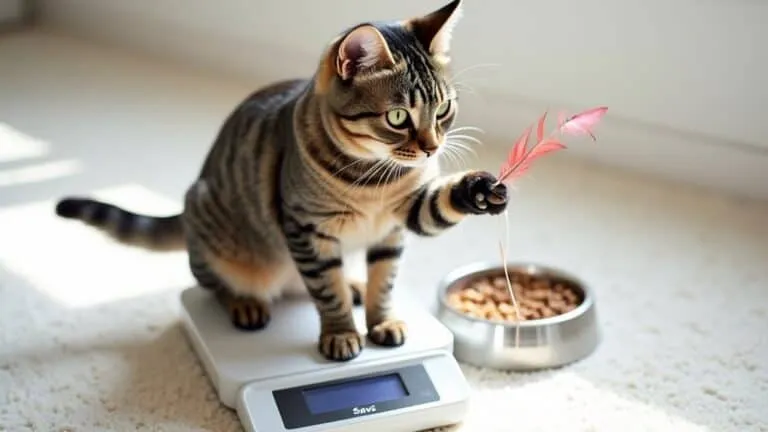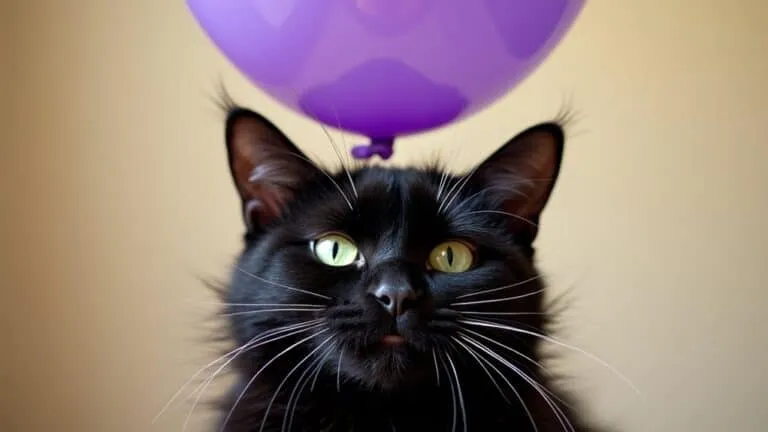The Best Fluffy Pancakes recipe you will fall in love with. Full of tips and tricks to help you make the best pancakes.

When it comes to cat brushing techniques, understanding your cat's coat type is key. If you've got a short-haired cat, they'll need a good brushing once a week. Long-haired cats, on the other hand, need attention every day to prevent matting and irritation.
Choose the right brush for your cat's coat. For long hair, a slicker brush is the way to go. For short hair, a soft-bristle brush is your best bet.
Now, let's talk technique. Gentle strokes are essential, and regular sessions are a must. You'll also need to adjust the frequency of brushing based on your cat's coat type.
Brushing has some amazing benefits for your cat. It improves blood circulation, reduces shedding, and promotes a shiny coat.
By mastering these techniques, you'll be well on your way to a healthier, happier cat. And that's just the beginning – there's more to explore to take your grooming game to the next level.
Understanding Your Cat's Coat
So, you want to brush your cat? Well, first, you need to understand their unique coat type. This is because it makes a big difference in the grooming techniques and tools you'll need to keep them healthy and looking good.
Cats have different coat types – short hair, long hair, and even hairless! Each type needs special care. For example, long-haired cats need to be brushed daily to prevent matting and tangling. If you don't, it can cause painful knots and skin irritation. On the other hand, short-haired cats are easier to manage. They only need to be brushed about once a week since their coats shed less.
Brushing your cat regularly can also help you detect skin issues, parasites, or changes in their coat condition early on. You see, a cat's coat health is a reflection of their overall well-being.
Choosing the Right Brush
Choosing the right brush for your cat is super important. If you pick the wrong one, it can lead to ineffective grooming, skin irritation, or even injury. So, it's crucial to choose a brush that caters to your cat's specific needs.
For long-haired cats, slicker brushes are the way to go. They're ideal for removing tangles and preventing matting. On the other hand, short-haired cats benefit from soft-bristle brushes. These stimulate skin and fur health, promoting a healthy and shiny coat.
If your cat has sensitive areas, consider using a rubber grooming mitt. It provides a gentle brushing experience while still removing loose hair. You might also want to try dual-sided brushes or de-shedding brushes. These are useful because they offer versatility and target the undercoat to manage shedding.
During each grooming session, pay attention to your cat's preferences and sensitivities. Be willing to try different brushes until you find the right one. This way, you'll guarantee a comfortable and effective brushing experience that leaves your cat feeling relaxed and happy.
Effective Brushing Techniques
When you start brushing your cat, keep in mind that it's not just about cleaning their coat.
You'll also be improving their overall health, strengthening your bond with them, and bringing out their natural shine.
Brushing for Better Health
Brushing your cat regularly can do wonders for their health. It helps stimulate blood circulation and spreads natural oils, which leads to healthier skin and a shiny coat. This essential grooming routine not only makes them look great, but it also improves their overall well-being.
When you brush your cat, use gentle strokes, working from less sensitive areas to help them get used to the sensation. The type of brush you use matters too. For long-haired breeds, a slicker brush is ideal for removing loose hair and preventing mats. Short-haired cats, on the other hand, benefit from soft-bristle brushes that minimize skin irritation.
Aim for 5-10 minutes of brushing per session, and adjust the frequency based on your cat's coat type. Long-haired cats may need daily brushing, while short-haired ones can get by with a weekly brushing. By removing dirt and debris, you'll help prevent skin issues and promote healthy skin.
The best part is, you don't have to be a professional groomer to master the art of brushing. With practice and patience, you can get the hang of it, and it'll lead to a stronger bond and a happier, healthier cat.
Brushing for Bonding Time
Brushing your cat regularly can do more than just keep their coat clean and shiny. It can also foster a deeper emotional connection between you and your feline friend, creating a sense of trust and comfort that goes beyond the grooming process itself. By making brushing a part of your daily routine, you can strengthen your bond with your cat.
So, how can you make the most of your brushing sessions and maximize bonding with your cat? Here are some techniques to try:
First, start with some gentle petting. This helps create a positive association with the brushing process, and your cat will learn to enjoy the attention. Begin in areas your cat loves being petted, like the back or under the chin.
Using treats as rewards is another great way to encourage cooperative behavior. Offer your cat some treats during or after grooming to reinforce the positive experience.
It's also important to keep your brushing sessions short and sweet. This prevents your cat from getting overwhelmed and helps keep them engaged. End on a positive note with some playtime or treats to leave them looking forward to the next session.
Being attentive to your cat's comfort level is crucial. Gradually introduce new techniques and monitor their comfort level to enhance the emotional connection between you and your cat.
Brushing for Coat Shine
So you want to get your cat's coat looking super shiny and healthy? It all starts with mastering some effective brushing techniques. When you brush in the direction of hair growth, you're promoting a shiny and healthy appearance. It's like giving their fur a little boost.
Using a slicker brush is key. It helps remove loose hair and debris, which prevents matting and makes their fur look even more lustrous. How often you brush your cat depends on their hair length. For short-haired cats, once a week is fine. But for long-haired cats, daily brushing is a must.
Regular brushing sessions do more than just remove loose hair. They also stimulate blood circulation, which contributes to healthier skin and a glossy coat. You can also try using a grooming mitt or rubber brush to gently remove dead hair. It's like giving your cat a little massage, which stimulates oil production for an even shinier coat.
Grooming for Health and Hygiene
Regular brushing does more than just reduce shedding and prevent mats.
It's also a crucial part of maintaining your cat's overall health and hygiene. When you brush your cat regularly, you're taking proactive steps towards managing their skin health.
You'll be better equipped to detect any potential issues early on. Gentle grooming techniques and the right tools for your cat's coat type can work wonders.
They promote healthy skin, improve circulation, and keep your cat clean and comfortable.
Skin Health Management
So, you want to keep your cat's skin healthy? One of the best things you can do is make brushing a regular part of their grooming routine.
When you brush your cat, you're removing dirt, debris, and loose fur that can irritate their skin and create hotspots. This helps prevent trapped materials from leading to infections or irritations.
Brushing also helps spread natural oils throughout their fur, which promotes healthy skin and a shiny coat.
As you brush through your cat's fur, you're more likely to notice any skin issues early on, like lumps, rashes, or parasites. This means you can get them to the vet quickly if they need it.
Regular brushing can also reduce stress-induced behaviors like excessive licking, which can lead to skin injury or infection.
By keeping their coat clean, you're also reducing the chances of matting and tangling, which can irritate the skin and even require medical treatment.
Regular Brushing Schedule
So, you want to keep your cat healthy and clean, right? To do that, you'll need to brush them regularly. If you don't, they might develop skin problems and their fur can get all matted.
Now, the frequency of brushing depends on the length of their hair. If you've got a long-haired cat, you'll need to brush them daily to prevent matting. Short-haired cats are a bit easier – they only need a weekly brushing.
Regular brushing does a lot of good things for your cat. It keeps their coat clean, reduces shedding, and even helps with blood circulation and skin health. It also makes their fur look super shiny!
Some cats need more frequent brushing than others, like those with thin skin, older cats, or sick cats. They've a harder time taking care of themselves, so you'll need to step in and help.
Additionally, because cats shed more during spring and fall, you'll need to brush them more often during those seasons.
It's a good idea to start brushing your cat from an early age, so they get used to it. That way, it'll be a breeze for both of you, and your cat's coat will look amazing!
Gentle Grooming Techniques
To make sure your cat has a calm and enjoyable grooming experience, you should brush them in the direction of their hair growth. Start with gentle strokes on areas that aren't too sensitive, like their back and shoulders. This helps prevent discomfort and promotes relaxation.
As you brush, use gentle strokes to get your cat used to the sensation on their skin and coat. As they get more comfortable, you can gradually move on to more sensitive areas like their belly and tail.
Make sure you're using a brush that's right for your cat's hair type. For example, if your cat has long hair, use a slicker brush. If they've short hair or are sensitive, use a soft-bristle brush. While you're brushing, keep an eye out for tangles and mats. If you find any, gently work them out with a grooming comb to prevent injury. Don't try to cut mats, and if they're really bad, you might need to get some professional help.
Throughout the brushing session, give your cat treats and praise them to make the experience positive. This will help reduce their stress and make them associate grooming with good things.
Managing Shedding and Matting
Regularly brushing your cat is super important for managing shedding and matting. It helps remove loose hair and prevents those unsightly tangles from forming. By committing to regular brushing, you can manage shedding and prevent mats from developing.
For long-haired cats, daily grooming is a must. For short-haired cats, once-a-week sessions are enough to limit loose fur in the home. Using a slicker brush or de-shedding tool can really help target loose hair and mats. It also distributes natural oils in the fur, improving coat health and decreasing the likelihood of matting due to dirt and debris buildup.
As you gently brush your cat, pay attention to their response. This can help you identify areas prone to matting. You can then target those spots with extra care and attention. If mats do develop, handle them gently with a comb or specialized de-matting tool to avoid skin injury.
Creating a Positive Grooming Experience
Creating a positive grooming experience for your cat is all about setting the right tone. Try brushing them when they're most relaxed, like after meals or during quiet moments. This helps them associate brushing with feelings of relaxation and comfort.
To guarantee a positive experience, make sure they're comfortable with your touch. Start with gentle, short sessions. If they seem okay with it, you can gradually increase the time.
Using treats and positive reinforcement throughout the grooming process can work wonders. Reward calm behavior to establish a positive association with the activity. Plus, it's a great way to bond with your cat!
When it comes to brushing techniques, take it slow. Start with less sensitive areas and move towards more challenging spots. This will prevent overwhelming your cat.
And remember, short, frequent grooming sessions are key to avoiding stress. As your cat becomes more comfortable with the process, you can gradually build up the duration over time.
Tips for Brushing Different Breeds
When it comes to brushing your cat, it's super important to remember that different breeds have different needs. You can't just use the same brush and technique on every cat.
For short-haired breeds like the American Shorthair or Siamese, a weekly brush with a soft bristle brush is all they need to get rid of loose hair and prevent hairballs. It's a pretty low-maintenance deal.
Medium-haired breeds, like the Burmese or Scottish Fold, need a bit more attention. You should brush them two to three times a week with a slicker brush to get rid of tangles and undercoat debris. This helps keep their skin healthy too.
Long-haired breeds, such as the Persian or Maine Coon, require daily brushing with a wide-tooth comb to prevent matting and tangling. You might also need to use a de-shedding tool every now and then.
If you have a sensitive or senior cat, you'll want to be extra gentle. Use soft grooming gloves or a gentle pet brush for short, calm brushing sessions. This helps avoid stressing them out or causing discomfort.
Frequently Asked Questions
How Do You Brush a Cat Effectively?
To brush a cat effectively, you need to get a few things right. First, you need to choose the right brushing tools for your cat's fur type.
Understanding the benefits of grooming is also important. Brushing your cat can help reduce shedding, prevent hairballs, and even strengthen your bond with them.
When it comes to the actual brushing, it's all about being gentle. You don't want to scare or hurt your cat, so make sure to use gentle strokes and be patient with them.
You should also think about how often to brush your cat. This will depend on their fur type and how quickly it gets matted or tangled.
Keep an eye on your cat's skin health too. If they have any skin conditions or irritations, you may need to adjust your brushing technique or use special products.
It's also important to consider your cat's behavior and personality. If they don't like being brushed, you may need to start slow and gradually build up their tolerance.
How to Brush an Unwilling Cat?
So, you're dealing with a cat that doesn't want to be brushed. That can be super frustrating.
First things first, you need to calm your cat down. When they're stressed, they get even more resistant to brushing. Try using some calming strategies like pheromone diffusers, gentle petting, or even just letting them relax in a quiet space for a bit.
Next, offer some treats. Cats love treats, and they can be a great motivator. Give your cat some tasty snacks while you're brushing them, and they might start to associate the brushing with positive things.
Finally, use some distraction techniques. Try brushing your cat while they're doing something they enjoy, like eating or playing. This can help take their mind off the brushing and make the whole process less stressful.
How Often Should You Brush Cats?
So, how often should you brush your cat? Well, it depends on a few things.
First, you need to consider your cat's coat type. Some cats have long hair, while others have short hair. The longer the hair, the more often you'll need to brush to prevent matting and tangling.
Next, think about your cat's age and health. Senior cats or those with health issues may need more frequent brushing to help remove loose hair and reduce shedding.
Seasonal changes also play a role. Cats tend to shed more during spring and fall, so you may need to brush more often during these times.
Lastly, some breeds just need more brushing than others. For example, Persians and Maine Coons have thick, long coats that require regular brushing.
The good news is that brushing has lots of benefits beyond just maintaining a healthy coat. It's also a great way to bond with your cat and reduce their stress levels. So, grab that brush and get started!
Do Cats Feel Better When You Brush Them?
So, you're wondering if brushing your cat actually makes them feel better? The answer is yes! When you brush your cat, they experience a bunch of benefits that really do make them feel more comfortable.
First, there's the stress relief aspect. Cats, just like humans, can get stressed out, and brushing them helps calm them down. It's like a mini-massage for your feline friend! This, in turn, can improve their behavior, making them less anxious and more relaxed.
Brushing also strengthens the bond between you and your cat. It's a way to show them love and care, and they can sense that. Plus, it helps with fur management, which is especially important for long-haired cats. By removing loose hair and tangles, you're promoting skin health and reducing the risk of hairballs.
Final Thoughts
So you've decided to master cat brushing techniques. That's a vital step in maintaining your cat's overall health and hygiene.
Regular brushing does a few important things. It helps prevent matting, reduces shedding, and even strengthens your bond with your cat.
To get the most out of brushing, you'll want to choose the right brush for your cat's coat type.
When you're brushing, use gentle yet firm strokes. Don't be too hard or too soft – just find a happy medium. Also, adapt your technique to your cat's individual needs. Every cat is different, after all.
With patience and practice, you'll start to see the full benefits of brushing. Your cat will look and feel their best, and that's what it's all about.








